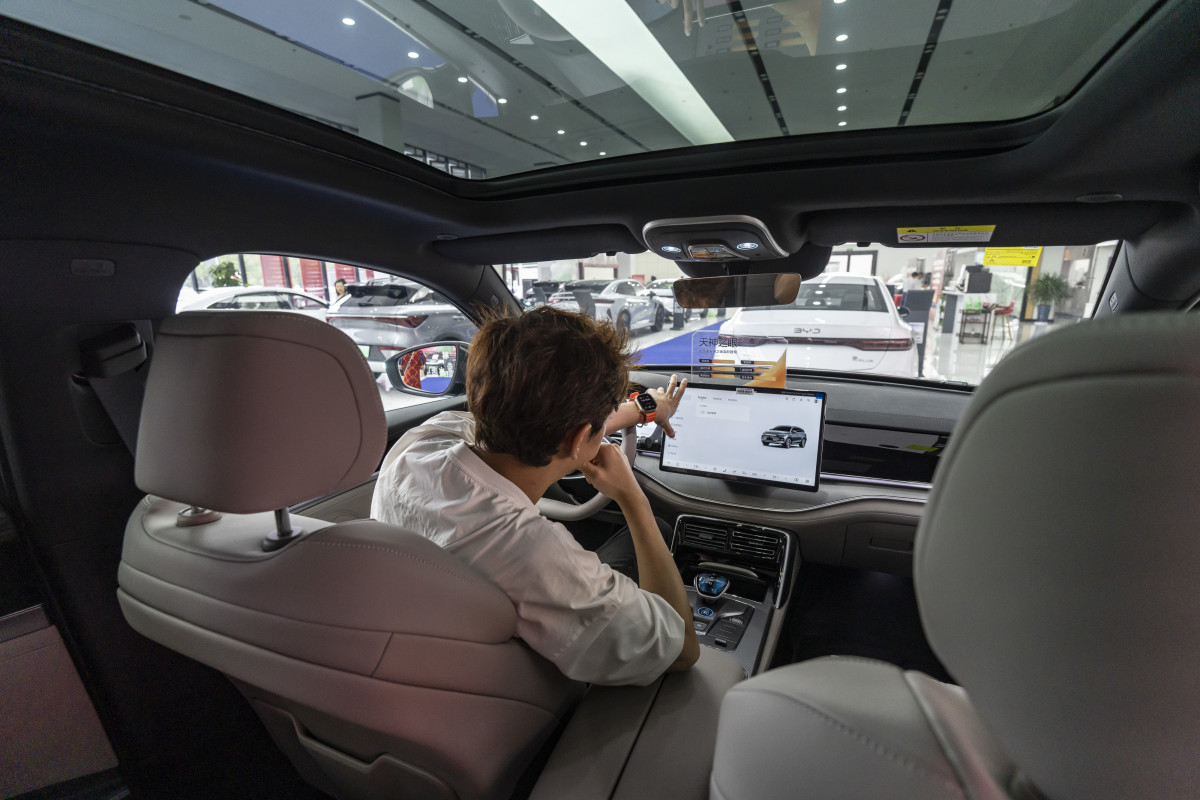China may change the way EVs operate by default
If you have ever driven an electric vehicle, such as one from Tesla or Rivian, or even models made by mainstream manufacturers like Nissan or Hyundai, you would probably have come face-to-face with a feature called one-pedal driving. On the surface, one-pedal driving sounds like a very convenient and frills-free way to drive. In electric vehicles and a selection of hybrid cars that feature it, the system utilizes its regenerative braking system to bring the vehicle to a stop when the driver comes off the accelerator, which can maximize electric range and potentially reduce brake pad wear.
However, one of the largest EV markets is becoming much more strict about groundbreaking tech, as experts in the region raise red flags about its efficacy.

Qilai Shen/Bloomberg via Getty Images
China adds new legislation regarding EVs and “single pedal braking”
According to a new report by the Chinese state-owned broadcaster CCTV News, the regulators at the Chinese Ministry of Industry and Information Technology recently released some new regulations that will see some changes to the passenger cars sold in the country.
Under the terms of GB 21670-2025, in the new edition of the “Technical Requirements and Test Methods for Passenger Car Braking Systems,” regulators state that upon startup, “the vehicle cannot be slowed down to a stop by releasing the accelerator pedal, and the driver must use the brake pedal to stop the vehicle.”
To put it into plain English: one-pedal driving hasn’t been entirely banned in China, but drivers must go through menus or toggle a switch to select it each time they drive, which regulators feel is much safer.

CFOTO/Future Publishing via Getty Images
The new rules intend to address safety concerns
The new regulation, which will come into effect in 2027, comes as many drivers in China, particularly older drivers, have been having a tough time with regenerative braking and one-pedal driving, which became the default setting in many Chinese-market EVs, particularly those made by Tesla. This effect caused some strange crashes labeled as “sudden unintended acceleration” (SUA), where drivers who thought they hit the brakes ended up stomping the throttle and causing some serious accidents.
After a number of crashes, regulators ordered Tesla to recall its cars and update the driving system, switching the default braking mode from “Hold” to “Creep” to encourage drivers to use the brake pedal to keep the car still. However, regulators weren’t completely happy with the fix and decided to change the rules. Last year, they announced this decision with a draft bill, and it’s now been approved as part of the national standard.
In addition to the new one-pedal rule, starting next year, new EVs sold in China must have brake lights that illuminate when deceleration caused by energy recovery exceeds 1.3 m/s². This addresses a common concern with drivers following behind EVs, who might not realize a car is slowing down without the conventional brake light cues. The new rules also indicate that anti-lock braking systems will become mandatory on new EVs in China starting in 2026, which is considerably later compared to the US (which mandated them in 2011) and the EU (which mandated them in 2004).
Final thoughts
The sophisticated tech that goes into EVs is cool and all, but as someone who is technically part of the social media-savvy and technologically adept Generation Z, regenerative braking and one-pedal driving are my least favorite features in today’s EVs and hybrid vehicles.
A string of videos about Uber passengers who get carsick in Teslas never fails to reach my ‘for you’ page on TikTok. Still, after watching many of them, it is easy to tell that their grievances lie with the regenerative braking system that Uber and other rideshare drivers somehow do not know how to use.
@litiagarr where’d u put the barf bags elon #carsick
♬ PARTY 4 U x NEVER BE LIKE YOU – ALTÉGO
“What the hell does Elon Musk put in his cars to make me feel so violently ill every single time I’m in one?” asked TikToker Gabe Escobar in an October 2024 video. “I don’t get carsick or motion sick ever in my life; I’ve been on 12-hour car rides, and I’ve been totally fine. I’ve been on a shrimp boat for an entire day and did not get sick.”
I am not entirely against regenerative braking, but in my experience driving cars with this kind of feature, including hybrids like the Toyota Crown and EVs like the Tesla Model Y, Rivian R1S, or Genesis GV60, it takes a while to adjust to each car’s re-gen “intensity.”
China is halfway there by regulating regenerative braking to be turned on in order to use it, but I think they should also mandate controls that adjust the level of “assistance” a driver gets. A seasoned fare-taking driver’s ability to go from gas to brake is muscle memory, and they will need the ability to either make the assistance low or turn it off altogether.